There are no gunshots to be heard or gangster rap music blaring from low-riding Chevys. Instead, roosters crowing and horses’ hooves going click-clack click-clack are heard throughout the paved streets. It’s a different world in the tight knit-community of Richland Farms inside the city of Compton.
The single-story homes are painted in bright colors. There are no bars on the windows. Some lawns are manicured and cut to perfection where others have slightly out grown grass. It’s what’s in the backyards of most of the homes in the neighborhood that may surprise outsiders. Homeowners in this 10-block enclave own livestock such as horses, chickens, ducks, goats, cows and other animals.
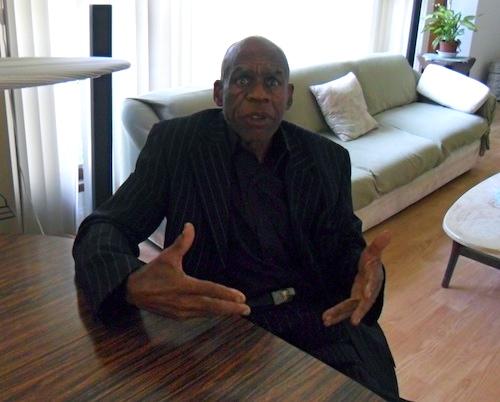 Retired school teacher Lloyd Bertrand Wilkins has lived in Compton for 61 years. He loves living in Richland Farms. |
Lloyd Bertrand Wilkins, a 73-year old retired school teacher and Compton resident for 61 years, for example, owns two properties in Richland Farms where he keeps 10 horses and two hybrid wolves. “You would never know what’s in the backs of these houses,” Wilkins says with a grin. “Richland Farms should be in the forefront of Compton’s image and it would change the public façade of the city dramatically.” He points out Richland Farms is one of the few places in the country that still looks like farmland and allows residents to keep animals freely.
The largest urban agricultural zone in Los Angeles County, Richland Farms is home to 435 families and hundreds of farm animals. The community is located between Wilmington Avenue and South Alameda Street and West Greenleaf Boulevard and West Alondra Boulevard. Each house sits on at least half an acre of land, where homeowners are free to own a livestock based on the size of their land.
Community members like 47-year old Priscilla Hoskinds ride pristine horses through the streets freely.
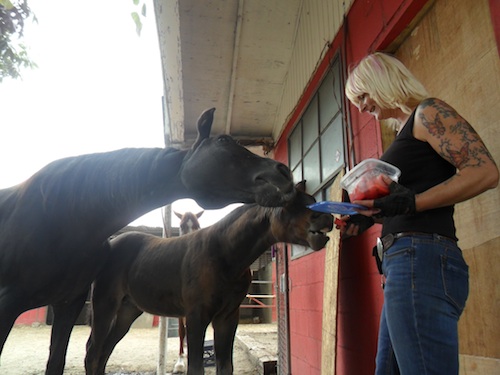 Richland Farms resident Priscilla Hoskinds tends to her horses. Richland Farms resident Priscilla Hoskinds tends to her horses. |
For the last six years, Hoskinds has been taking care of four horses that had been abused by previous owners. Her love for the animals is even embedded on her skin – horse tattoos are branded on her arm and chest. “I do a lot of farm stuff everyday,” Hoskinds says. “ It’s a daily thing to take care of these animals, but I love nature and love these animals.”
Unlike the changing faces of many areas in Los Angeles, Richland Farms has stayed the same over the years. Griffith Compton, founder of the city, donated the land that now carries his name in 1888. Richland Farms has been zoned specifically for agricultural use.
Business owner Mayisha Akbar said she was blown away when she first learned the area was zoned specifically for agricultural uses. Akbar, who is a Harbor City, CA native and was raised around animals, operates the Compton Jr. Posse, an afterschool equestrian program for the inner-city youth.
She wanted to raise her children in an environment similar to the one she was raised in and Richland Farms was the perfect fit, so she moved to the area in 1988. After buying the land and a few horses, soon neighborhood children came to play. She insisted the children needed to go to school in order for them to spend time on her ranch. That’s how the Compton Jr. Posse was born.
“The Compton Jr. Posse grew out of a need for the community,” Akbar said. “We are an oasis and safe haven for kids and this program is a world of opportunity for them.”
Akbar’s family owns three houses in a row in Richland Farms, so they combined the land in the backyards to create the ranch where children in the community can come afterschool and weekends to enjoy a safe environment.
“I believe that the reason there are few racial barriers in Richland Farms is because of the commonality of the soil and the animals that give human beings a new respect for life, which makes it less likely for there to be violence and aggressiveness in this area,” Akbar says.
Wilkins agrees. “Richland Farms is an area where you have a group – two minority groups – that have been generally disenfranchised who are now trying to work together to make changes.”
In recent years, the racial demographics of Compton have changed dramatically. African-Americans, who were once the majority of the city, have become a minority. Now, Hispanics inhabit the 10 square miles of land with over 56 percent occupying the “Hub City” – Compton’s nickname due to its central location in Los Angeles. Tension between the two ethnicities can sometimes be felt within the community, especially when the economy is down and jobs are scarce. But Richland Farms is an area where Hispanics and Blacks comingle without any drama.
“Blacks and Mexicans have always been in competition with each other for jobs and recognition,” Wilkins says. “That’s why they don’t like each other. We are consolidating and bringing together the Blacks and Mexicans so they can work and live together.”
Compton is constantly battling its negative image in the media, which tends to see it only as a place where gang members are at war. But thanks to programs like Akbar’s and Wilkins’ community activism, Richland Farms is an area that is truly rich with cultural and pride within Compton.
That’s why, Akbar says, it’s important to keep in mind that “there is a lot of good stuff going on in Compton.”









 Just as the public and private sectors were hit in the recession, non-profits have fought for support as funding declined. The mayor says the non-profit sector in LA is a 35 and a half billion dollar industry and employs six percent of the region’s work force.
Just as the public and private sectors were hit in the recession, non-profits have fought for support as funding declined. The mayor says the non-profit sector in LA is a 35 and a half billion dollar industry and employs six percent of the region’s work force.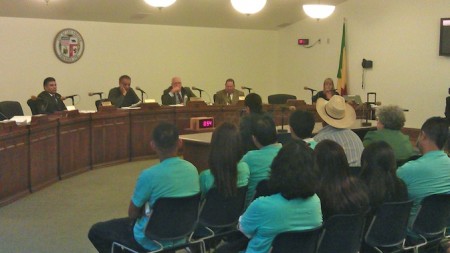 In a 4-0 vote, the Los Angeles City Budget and Finance Committee approved Councilwoman Jan Perry’s request to make changes in a land deal that would release a developer from allocating land for a park. It’s now up to the L.A. City Council to make a final decision on the future of that land.
In a 4-0 vote, the Los Angeles City Budget and Finance Committee approved Councilwoman Jan Perry’s request to make changes in a land deal that would release a developer from allocating land for a park. It’s now up to the L.A. City Council to make a final decision on the future of that land._.png)
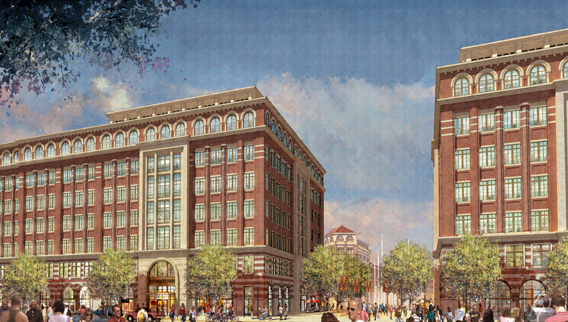
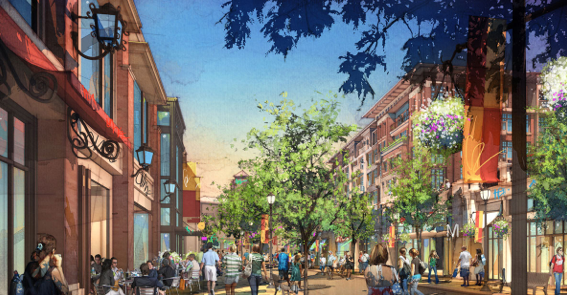
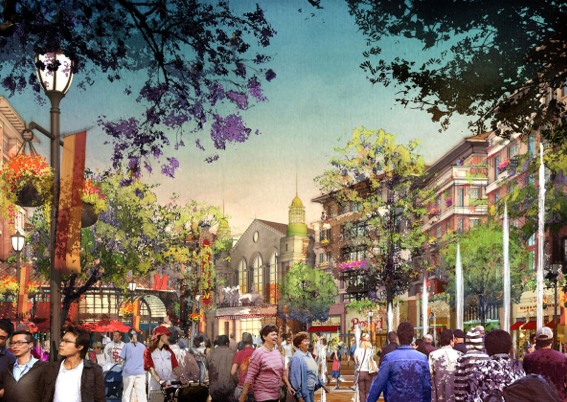


 “I don’t trust that my money will be there for me at the end,” says Obdulio Hernández. “I’m afraid of the risk. What if the company goes bankrupt? Then I’ll have nothing!” he exclaims. “Maybe if I understood how the plan works, I’d be willing to invest,” he says referring to retirement plans.
“I don’t trust that my money will be there for me at the end,” says Obdulio Hernández. “I’m afraid of the risk. What if the company goes bankrupt? Then I’ll have nothing!” he exclaims. “Maybe if I understood how the plan works, I’d be willing to invest,” he says referring to retirement plans. 
 For those Latinos who are fortunate to have employer-sponsored 401(k)s, many don’t participate in the retirement plans or don’t save enough, and some who do, make mistakes that can cost more than they bargained for.
For those Latinos who are fortunate to have employer-sponsored 401(k)s, many don’t participate in the retirement plans or don’t save enough, and some who do, make mistakes that can cost more than they bargained for.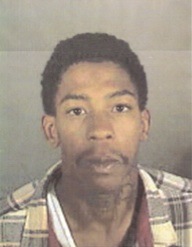 LAPD Central Traffic Division detectives are trying to find the person responsible for the hit-and-run that seriously injured 24 year-old Susana Prieto on the early morning of Sunday, Oct. 16.
LAPD Central Traffic Division detectives are trying to find the person responsible for the hit-and-run that seriously injured 24 year-old Susana Prieto on the early morning of Sunday, Oct. 16. 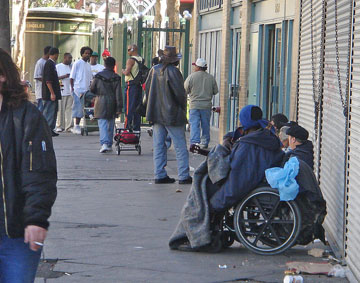
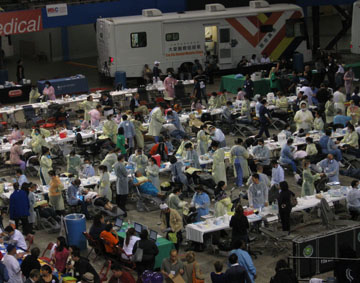 Today was the first day of a four-day health clinic in The Los Angeles Sports Arena that’s expected to bring in five-thousand uninsured and underinsured patients seeking basic health care.
Today was the first day of a four-day health clinic in The Los Angeles Sports Arena that’s expected to bring in five-thousand uninsured and underinsured patients seeking basic health care. 




